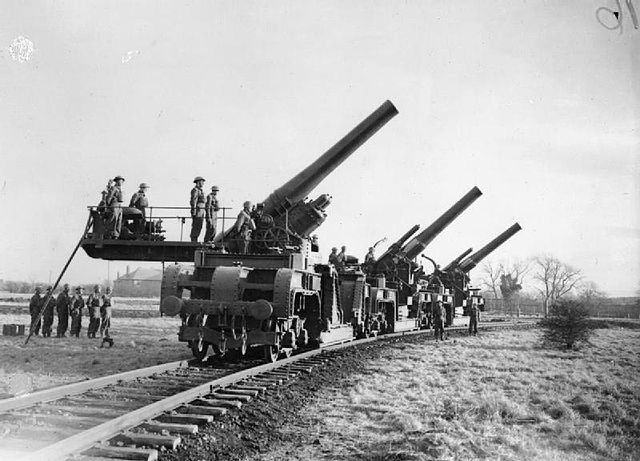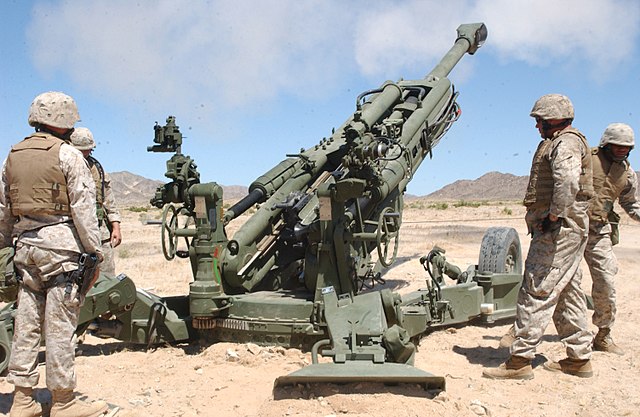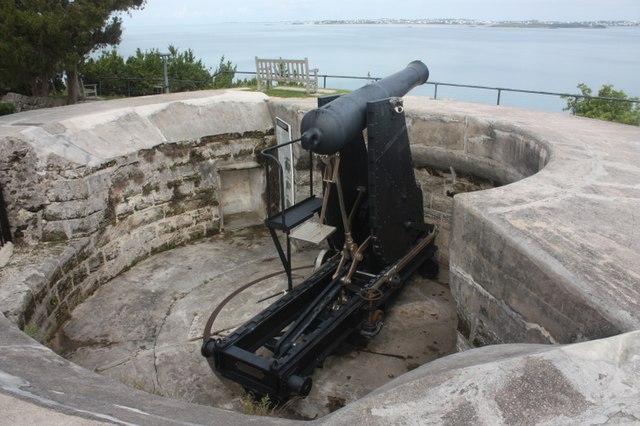A railway gun, also called a railroad gun, is a large artillery piece, often surplus naval artillery, mounted on, transported by, and fired from a specially designed railway wagon. Many countries have built railway guns, but the best-known are the large Krupp-built pieces used by Germany in World War I and World War II. Smaller guns were often part of an armoured train. Only able to be moved where there were good tracks, which could be destroyed by artillery bombardment or airstrike, railway guns were phased out after World War II.
French 370 mm railway howitzer of World War I
Non-traversing (top); car traversing mount (middle); top carriage traversing mount (bottom)
British 12-inch howitzers on top-carriage traversing mounts, traversed 90°, Catterick, December 1940
Cradle recoil (top); top carriage recoil (second); sliding recoil (third); rolling recoil (bottom)
Artillery are ranged weapons that launch munitions far beyond the range and power of infantry firearms. Early artillery development focused on the ability to breach defensive walls and fortifications during sieges, and led to heavy, fairly immobile siege engines. As technology improved, lighter, more mobile field artillery cannons developed for battlefield use. This development continues today; modern self-propelled artillery vehicles are highly mobile weapons of great versatility generally providing the largest share of an army's total firepower.
US Artillerymen fire-off an artillery round with the newly fielded M777 Lightweight 155-millimeter Howitzer
French soldiers in the Franco-Prussian War 1870–71
British 64 Pounder Rifled Muzzle-Loaded (RML) Gun on a Moncrieff disappearing mount, at Scaur Hill Fort, Bermuda. This is a part of a fixed battery, meant to protect against over-land attack and to serve as coastal artillery.
7-person gun crew firing a US M777 Light Towed Howitzer, War in Afghanistan, 2009








